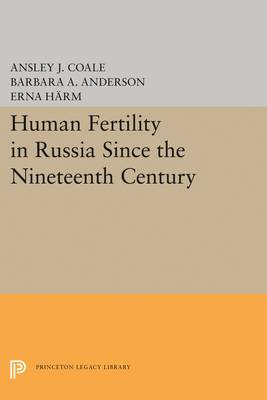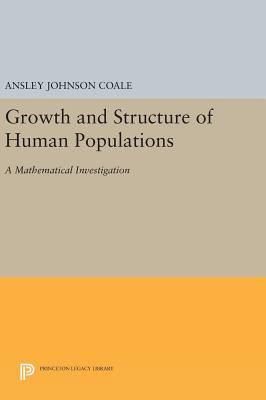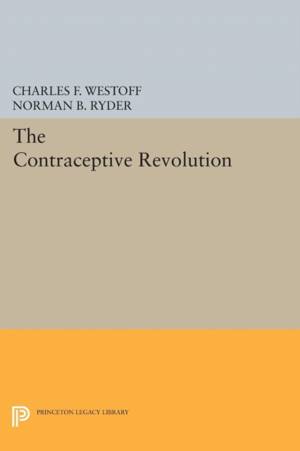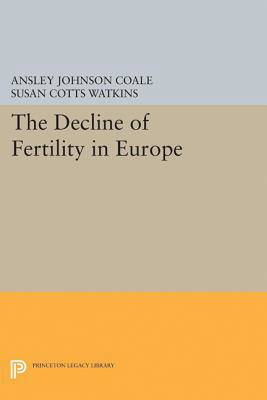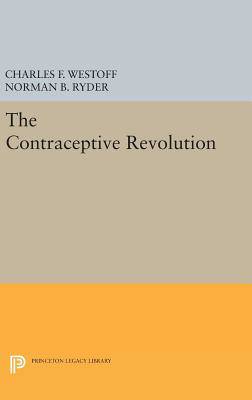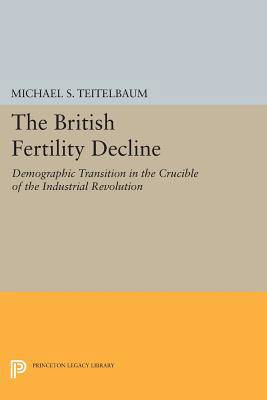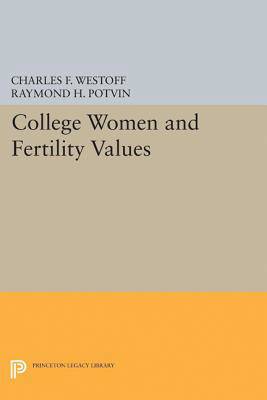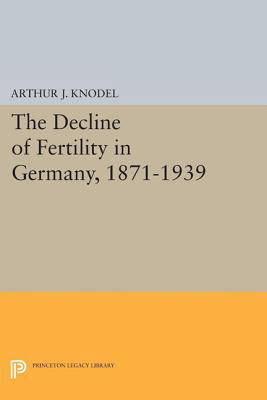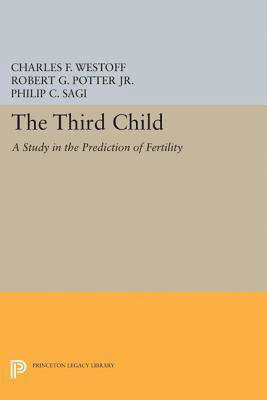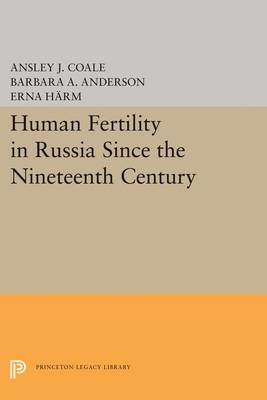
- Retrait gratuit dans votre magasin Club
- 7.000.000 titres dans notre catalogue
- Payer en toute sécurité
- Toujours un magasin près de chez vous
- Retrait gratuit dans votre magasin Club
- 7.000.0000 titres dans notre catalogue
- Payer en toute sécurité
- Toujours un magasin près de chez vous
Résultats pour "Office of Population Research"
-
Human Fertility in Russia Since the Nineteenth Century
Ansley Johnson Coale, Barbara a Anderson, Erna Härm
- Livre relié | Anglais | Office of Population Research
- The birth rate in late-nineteenth century Russia was high and virtually constant, but by 1970 it had fallen by about two-thirds. Although similar redu... Savoir plus
227,45 €Livraison 2 à 3 semaines227,45 €Livraison 2 à 3 semaines -
Reproduction in the U.S., 1965
Norman B Ryder, Charles F Westoff
- Livre relié | Anglais | Office of Population Research
- The 1965 National Fertility Study is the third in a continuing series of major studies of American fertility. Based on interviews with 5,600 married w... Savoir plus
302,95 €Livraison 2 à 3 semaines302,95 €Livraison 2 à 3 semaines -
College Women and Fertility Values
Charles F Westoff, Raymond H Potvin
- Livre relié | Anglais | Office of Population Research
- Has the college experience of women been an influence on the number of children desired and the number and spacing of their children? Do women come to... Savoir plus
185,45 €Livraison 2 à 3 semaines185,45 €Livraison 2 à 3 semaines -
The Later Years of Childbearing
Larry L Bumpass, Charles F Westoff
- Livre broché | Anglais | Office of Population Research
- Why do American couples differ in the number of children they have? To answer this question the first major longitudinal study in American fertility w... Savoir plus
59,95 €Livraison 2 à 3 semaines59,95 €Livraison 2 à 3 semaines -
New Estimates of Fertility and Population in the United States
Ansley Johnson Coale, Melvin Zelnik
- Livre relié | Anglais | Office of Population Research
- Census decennial enumerations are utilized to achieve two useful estimates: (l) Annual series of estimates of births, birth rates, and fertility rates... Savoir plus
146,95 €Livraison 2 à 3 semaines146,95 €Livraison 2 à 3 semaines -
Growth and Structure of Human Populations
Ansley Johnson Coale
- Livre relié | Anglais | Office of Population Research
- Although mathematical demography has traditionally studied the so-called stable population (fixed mortality and fertility schedules), Ansley Coale inv... Savoir plus
177,45 €Livraison 2 à 3 semaines177,45 €Livraison 2 à 3 semaines -
The Contraceptive Revolution
Charles F Westoff, Norman B Ryder
- Livre broché | Anglais | Office of Population Research
- Here is the full report of the 1970 National Fertility Study, a national sample survey for which thousands of women were interviewed who had been marr... Savoir plus
111,45 €Livraison 2 à 3 semaines111,45 €Livraison 2 à 3 semaines -
The Decline of Fertility in Europe
Ansley Johnson Coale
- Livre broché | Anglais | Office of Population Research
- This volume summarizes the major findings of the Princeton European Fertility Project. The Project, begun in 1963, was a response to the realization t... Savoir plus
146,95 €Livraison 2 à 3 semaines146,95 €Livraison 2 à 3 semaines -
The Contraceptive Revolution
Charles F Westoff, Norman B Ryder
- Livre relié | Anglais | Office of Population Research
- Here is the full report of the 1970 National Fertility Study, a national sample survey for which thousands of women were interviewed who had been marr... Savoir plus
285,45 €Livraison 2 à 3 semaines285,45 €Livraison 2 à 3 semaines -
Reproduction in the U.S., 1965
Norman B Ryder, Charles F Westoff
- Livre broché | Anglais | Office of Population Research
- The 1965 National Fertility Study is the third in a continuing series of major studies of American fertility. Based on interviews with 5,600 married w... Savoir plus
117,95 €Livraison 2 à 3 semaines117,95 €Livraison 2 à 3 semaines -
The Decline of Fertility in Europe
Ansley Johnson Coale
- Livre relié | Anglais | Office of Population Research
- This volume summarizes the major findings of the Princeton European Fertility Project. The Project, begun in 1963, was a response to the realization t... Savoir plus
377,45 €Livraison 2 à 3 semaines377,45 €Livraison 2 à 3 semaines -
Family Growth in Metropolitan America
Charles F Westoff
- Livre broché | Anglais | Office of Population Research
- This analysis is based upon a study of 1,165 couples, all of whom had two children by the time of the interviews and lived in one of the Standard Metr... Savoir plus
117,95 €Livraison 2 à 3 semaines117,95 €Livraison 2 à 3 semaines -
The British Fertility Decline
Michael S Teitelbaum
- Livre broché | Anglais | Office of Population Research
- Building on the theory of the demographic transition, Michael S. Teitelbaum assesses the dramatic decline in British fertility from 1841 to 1931 in te... Savoir plus
82,45 €Livraison 2 à 3 semaines82,45 €Livraison 2 à 3 semaines -
A Century of Portuguese Fertility
Massimo Livi Bacci
- Livre broché | Anglais | Office of Population Research
- This book treats aspects of the social and demographic history of Portugal in the last century, giving particular attention to the transition from a s... Savoir plus
59,95 €Livraison 2 à 3 semaines59,95 €Livraison 2 à 3 semaines -
A Century of Portuguese Fertility
Massimo Livi Bacci
- Livre relié | Anglais | Office of Population Research
- This book treats aspects of the social and demographic history of Portugal in the last century, giving particular attention to the transition from a s... Savoir plus
146,95 €Livraison 2 à 3 semaines146,95 €Livraison 2 à 3 semaines -
College Women and Fertility Values
Charles F Westoff, Raymond H Potvin
- Livre broché | Anglais | Office of Population Research
- Has the college experience of women been an influence on the number of children desired and the number and spacing of their children? Do women come to... Savoir plus
67,95 €Livraison 2 à 3 semaines67,95 €Livraison 2 à 3 semaines -
The Decline of Fertility in Germany, 1871-1939
Arthur J Knodel
- Livre broché | Anglais | Office of Population Research
- This is the second in a series of monographs on the historic decline of European fertility to be issued by the Office of Population Research at Prince... Savoir plus
91,95 €Livraison 2 à 3 semaines91,95 €Livraison 2 à 3 semaines -
The Female Population of France in the 19th Century
Etienne Van De Walle
- Livre relié | Anglais | Office of Population Research
- In analyzing the social and economic factors underlying the decline of fertility in nineteenth-century France. Etienne van de Walle found that officia... Savoir plus
368,95 €Livraison 2 à 3 semaines368,95 €Livraison 2 à 3 semaines -
Third Child
Charles F Westoff, R G Potter
- Livre broché | Anglais | Office of Population Research
- The second phase of a long-term study in American fertility. Tables, interview forms. Originally published in 1963. The Princeton Legacy Library uses ... Savoir plus
82,45 €Livraison 2 à 3 semaines82,45 €Livraison 2 à 3 semaines -
Human Fertility in Russia Since the Nineteenth Century
Ansley Johnson Coale, Barbara a Anderson, Erna Härm
- Livre broché | Anglais | Office of Population Research
- The birth rate in late-nineteenth century Russia was high and virtually constant, but by 1970 it had fallen by about two-thirds. Although similar redu... Savoir plus
88,95 €Livraison 2 à 3 semaines88,95 €Livraison 2 à 3 semaines -
Family Growth in Metropolitan America
Charles F Westoff
- Livre relié | Anglais | Office of Population Research
- This analysis is based upon a study of 1,165 couples, all of whom had two children by the time of the interviews and lived in one of the Standard Metr... Savoir plus
319,45 €Livraison 2 à 3 semaines319,45 €Livraison 2 à 3 semaines
21 sur 21 résultat(s) affiché(s)





